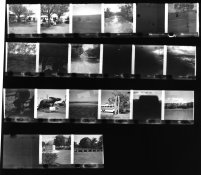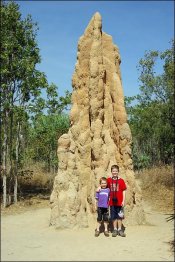Recently was given a 177x Kodak Instamatic with a roll of K64 still in it. It was showing exp 20 in the window but when I advanced the lever it 'cocked' so I decided the last frame had yet to be exposed (probably why it had never been developed). I pointed it out the window and clicked the shutter then wound the film on to completion. Went and scoured the web for some suggestions on developing with XTOL but only found one reference of 7mins but it didn't say what dilution so after analysing other suggestions I decided 7mins was a bit short and chose 9mins.
Based on what I'd read here I did pre-washes until there was no de-colouration of the rinse water (was tinted yellow) then developed using Xtol stock for 9min at 20C. I then did multiple rinses until the water was clear as it had a black tint to start with. Next I fixed using fresh Ilford Hypam for 5mins, then more rinsing (more black). After a few more rinses I opened the tank to examine what I had. Very dense negs but I could see images. Decided to fix for a bit longer.
I decided that maybe even though the rinse water had stopped having any discolouring, the remjet may not have cleared. I ran around the house looking for something with borax listed as an ingredient but the only thing that was a maybe was dishwashing machine powder. Didn't have the ingredients listed but I found them online and it did have 20-30% Borax in it along with a host of other things. Was worried about what else was in it so tried another suggestion of baking soda. Soaked the film in that for several minutes but nothing happened. I chopped of a small bit of the leader and physically scrubbed it but nothing came off so tried the dishwasher powder with the same result. Decided just to wash the film for about 20 minutes, then hang up to dry.
Scanned a few to 'have a look' and the scanner (Epson V700) did a decent job considering their density.
This is the frame I took.

One that sort of looked ok

So, I headed into my darkroom to see if I could produce a contact sheet. My normal proof sheet for my '35mm setup' (LPL C7700 with colour head and 50mm lens) yields exposures about 10secs @ f5.6. The dense negs were going to take a lot more light and they looked 'low contrast' so I cranked up the magenta filtration to 170, stopped the lens down to f5.6 and gave it bursts of 10secs (simple linear test print). Came out basically white... Next one I opened up the lens to f2.8 and went to 30sec steps. Got something this time and surprising decided 170M was too much so turned that down to 130M and selected 90secs. Did all neg strips this time and got the following.

I then made a print of the buffalo neg (on 8x10 paper although it's a slightly bigger enlargement as I left the enlarger head where it was) using the 90secs @ f2.8, 130M and got this...

I haven't managed to send any of the scans to the person (my mother-in-law) who gave me the camera yet to try and date the pictures but my wife believes it won't be hers because she hasn't been on a bus trip to Darwin (where the buffalo was located... I found a postcard of it in ebay which said it was made in 1979).
Neg 6 looks a lot like a termite mound we visited in 2007











 .
. ....u n b e l i v a b l e ....???
....u n b e l i v a b l e ....???

